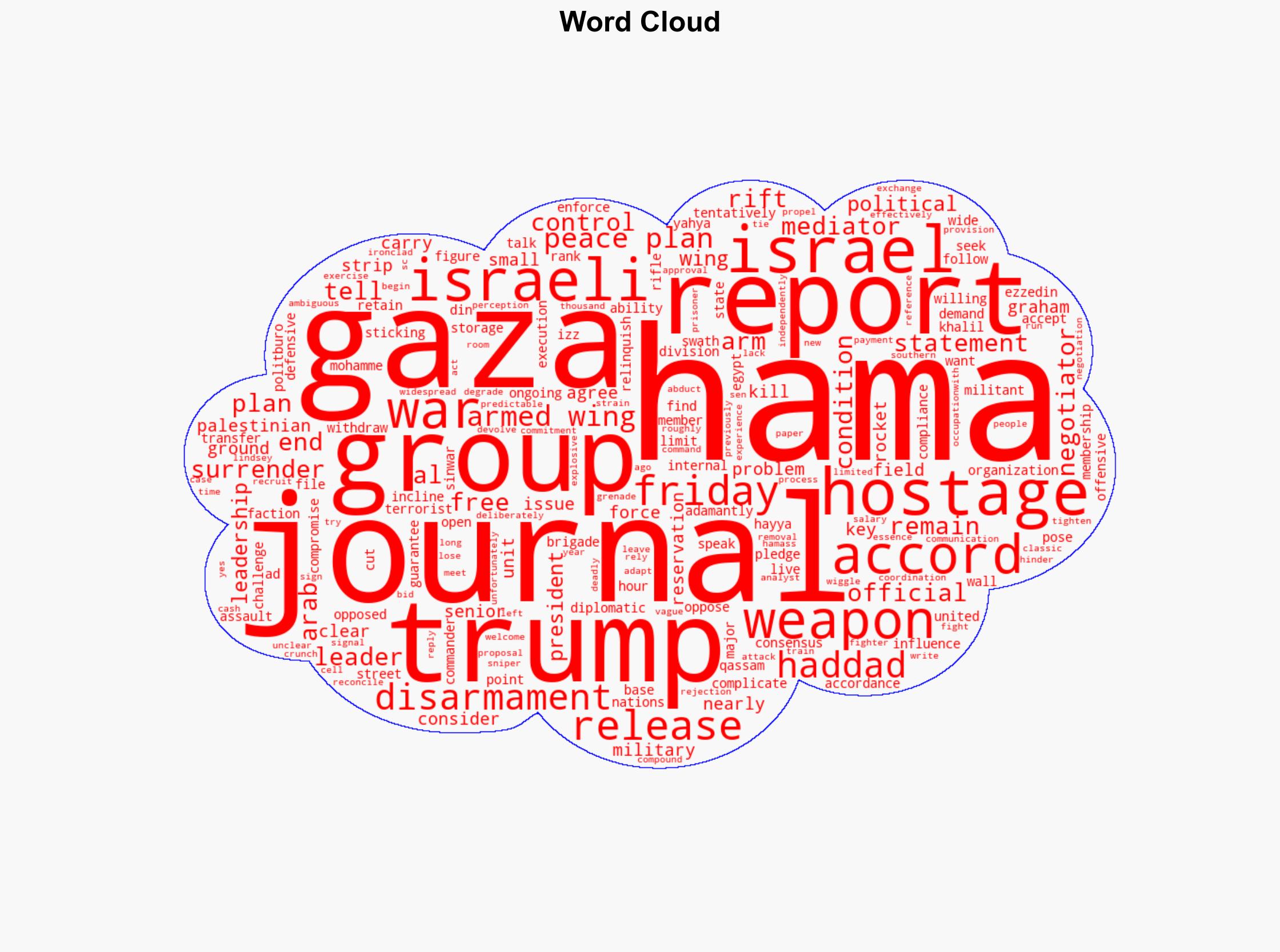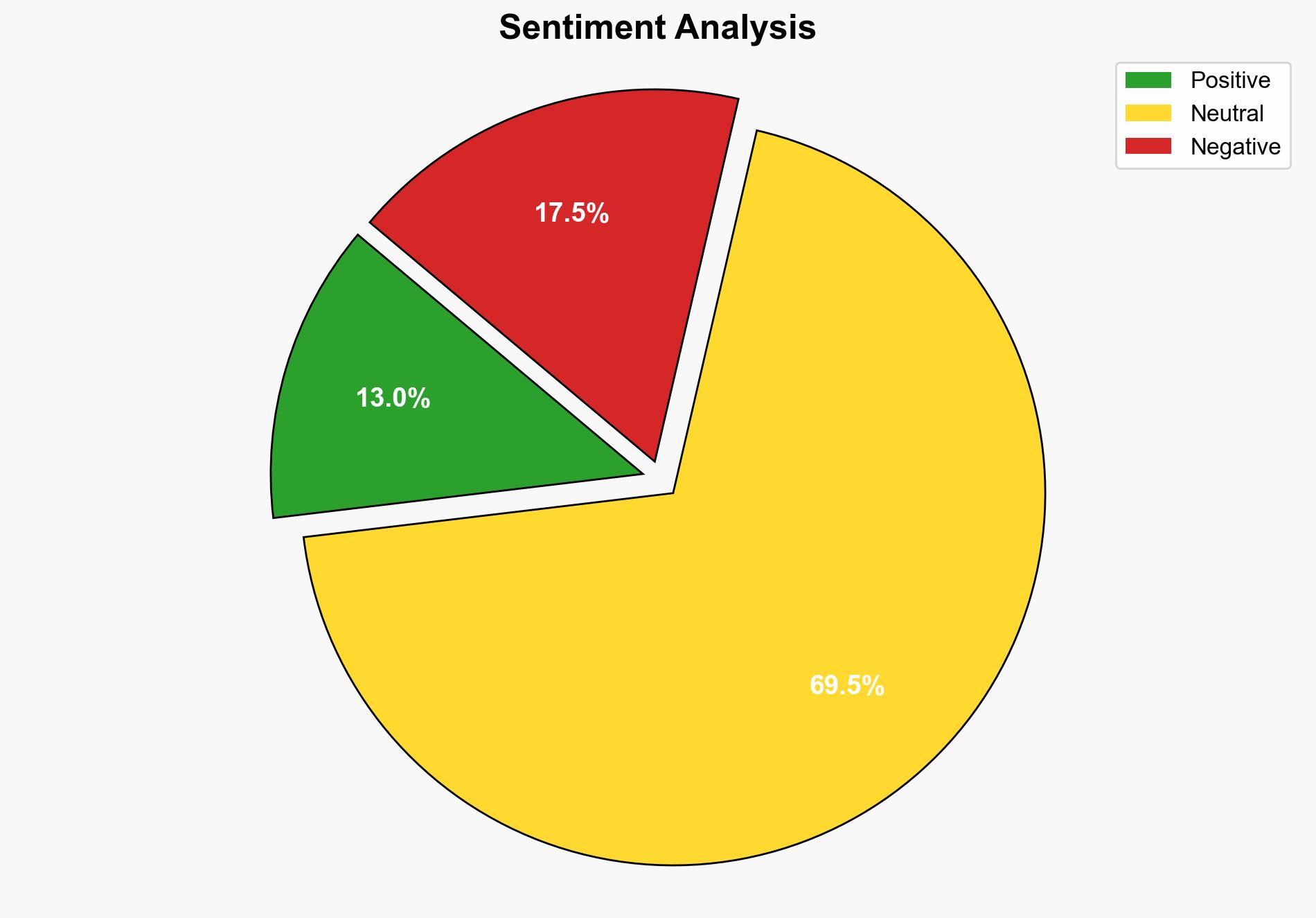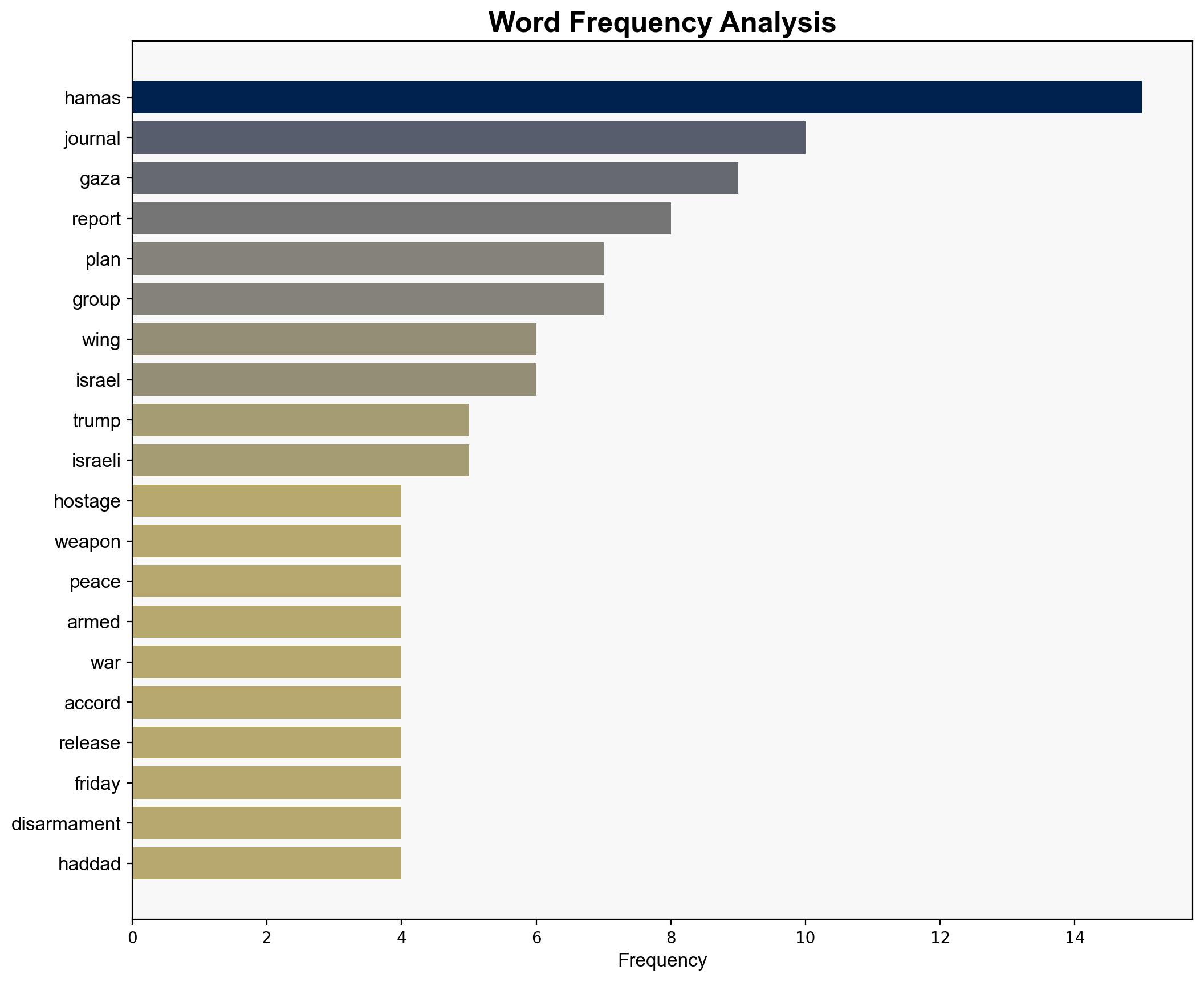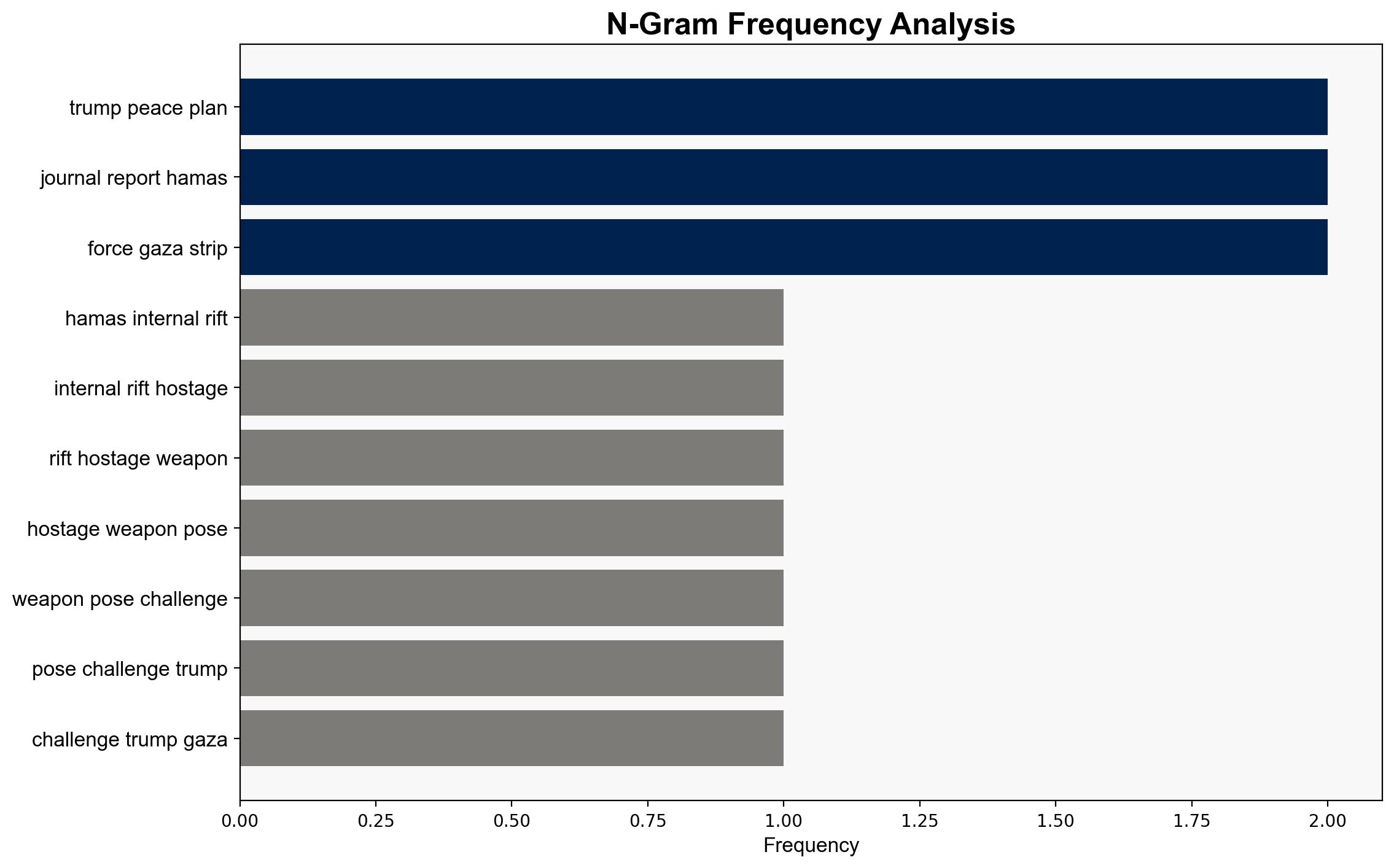Hamas internal rift over hostages weapons could pose challenges to Trumps Gaza peace plan report – New York Post
Published on: 2025-10-04
Intelligence Report: Hamas internal rift over hostages weapons could pose challenges to Trump’s Gaza peace plan report – New York Post
1. BLUF (Bottom Line Up Front)
The internal rift within Hamas over disarmament and hostage release significantly complicates the implementation of Trump’s Gaza peace plan. The most supported hypothesis suggests that the political wing of Hamas may tentatively agree to the plan, but the armed wing’s resistance could derail progress. Confidence level: Moderate. Recommended action: Engage in diplomatic efforts to bridge the gap between Hamas factions, while preparing for potential escalation if negotiations fail.
2. Competing Hypotheses
Hypothesis 1: The political leadership of Hamas will successfully negotiate with their armed wing to accept the peace plan, leading to a unified stance that facilitates the plan’s implementation.
Hypothesis 2: The armed wing’s opposition will prevail, causing the peace plan to stall or fail due to internal dissent and refusal to disarm.
Using the Analysis of Competing Hypotheses (ACH) 2.0, Hypothesis 2 is better supported due to the entrenched opposition from the armed wing and the historical precedence of their influence over political decisions.
3. Key Assumptions and Red Flags
Assumptions include the belief that Hamas’s political wing has sufficient influence to negotiate disarmament and that external mediators can effectively facilitate compromise. Red flags include the ambiguous language in Hamas’s statements and the potential for misinterpretation or manipulation by involved parties. The lack of clear Israeli commitment to withdraw forces is a critical missing element.
4. Implications and Strategic Risks
Failure to reconcile differences within Hamas could lead to continued hostilities, undermining regional stability and increasing the risk of broader conflict. The economic strain on Gaza may exacerbate tensions, while the potential for independent militant actions could provoke Israeli military responses. Cyber and psychological operations may be employed by both sides to sway public opinion and morale.
5. Recommendations and Outlook
- Engage with regional partners to facilitate dialogue between Hamas factions and ensure a unified approach to the peace plan.
- Prepare contingency plans for potential escalation, including humanitarian aid and conflict de-escalation strategies.
- Best-case scenario: Successful negotiation leads to peace plan implementation. Worst-case scenario: Internal dissent leads to renewed conflict. Most likely scenario: Prolonged negotiations with intermittent violence.
6. Key Individuals and Entities
Khalil al-Hayya, Ezzedin al-Haddad, Yahya Mohammed Sinwar
7. Thematic Tags
national security threats, counter-terrorism, regional focus, conflict resolution




